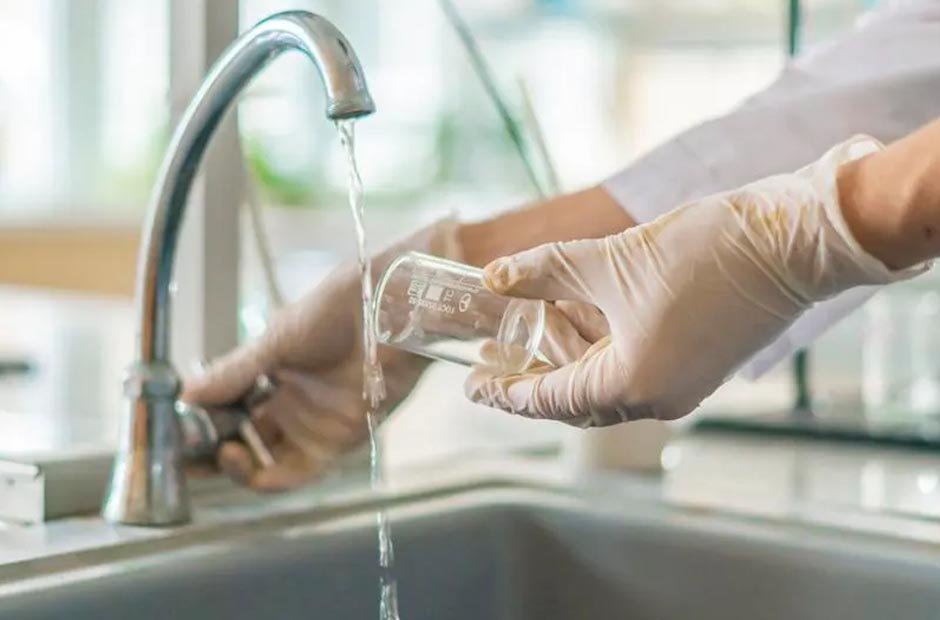Safe and clean drinking water is essential for the well-being of your family. Ensuring the quality of your tap water is crucial, as it directly impacts your health. In this article, we will explore how to test your drinking water quality at home. By following these steps, you can take proactive measures to safeguard your family’s health and ensure that your water is free from contaminants.
Understanding Water Quality
Before we delve into the testing process, it’s essential to understand what water quality means. Water quality refers to the condition and safety of the water you consume. Various factors can affect water quality, including the presence of contaminants and impurities. Ensuring good water quality is vital for your family’s health.
Common Water Quality Issues and Their Causes
1. Foul Odors or Taste in Water
Causes:
One of the most common water quality issues is a foul odor or unusual taste in your drinking water. This can occur due to bacterial contamination or the presence of certain minerals.
Identification and Solutions:
If you notice an unpleasant odor or taste, consider using activated carbon filtration systems to improve the taste and odor of your water. These filters are effective at removing impurities that affect water quality.
2. Discoloration of Water
Causes:
Discoloration, such as brown or rusty water, is often a result of sediment or rust in the water supply. Aging plumbing and pipes can contribute to this issue.
Identification and Solutions:
To address discoloration, consider installing a whole-house water filtration system or a point-of-use filter. Regularly flushing your plumbing system can also help prevent sediment buildup.
3. Hard Water Problems (Mineral Buildup)
Causes:
Hard water, characterized by high mineral content, can lead to mineral buildup in pipes and appliances. This occurs when water contains excessive amounts of minerals like calcium and magnesium.
Identification and Solutions:
Water softeners are an effective solution for hard water problems. These systems remove minerals, preventing buildup and improving water quality.
By identifying common water quality issues and their underlying causes, you can take appropriate actions to address them and improve the overall quality of your drinking water.
Home Water Testing Kits
Now that you understand some potential water quality issues, it’s time to explore how you can test your drinking water at home. The first step in this process is obtaining a home water testing kit.
Advantages of Using DIY Testing Kits
Home water testing kits offer several advantages:
- Cost-Effective: DIY testing kits are affordable and readily available, making them an economical choice for homeowners.
- Convenience: Testing your water at home allows you to monitor its quality regularly without the need for professional assistance.
- Quick Results: Most home testing kits provide results within minutes, giving you immediate feedback on your water’s quality.
Types of Tests You Can Perform at Home
Home water testing kits typically offer two types of tests:
- Basic Water Quality Tests: These tests assess fundamental water quality parameters, such as pH levels, hardness, and chlorine content. Basic tests provide a general overview of your water’s condition.
- Specific Contaminant Tests: For a more detailed analysis, you can opt for specific contaminant tests. These tests can detect various contaminants, including bacteria, lead, pesticides, and heavy metals. Specific tests are especially useful if you suspect a particular issue with your water.
Conducting a Home Water Quality Test
Performing a home water quality test is straightforward. Here’s a step-by-step guide to help you get started:
Step 1: Collecting a Water Sample
- Begin by collecting a water sample from your tap. Use a clean container, preferably one provided with your testing kit, to avoid contamination.
- Allow the water to run for a few minutes to ensure you’re collecting a representative sample.
- Fill the container to the recommended level specified in the test kit instructions.
Step 2: Using the Testing Kit Components
- Follow the instructions provided with your testing kit to conduct the selected tests.
- Typically, you’ll add specific reagents or chemicals to the water sample as directed.
- Observe any color changes, reactions, or measurements according to the kit’s guidelines.
Step 3: Interpreting Test Results
- Compare the results obtained from your tests to the reference values provided in the kit’s instructions.
- Some kits may include color charts or digital readings to help you interpret the results accurately.
- Take note of any readings that fall outside the recommended ranges.
Additional Tips for Conducting Specific Contaminant Tests
When conducting specific contaminant tests, such as those for bacteria or heavy metals, follow these additional tips:
- Ensure a sterile environment to prevent contamination of the water sample.
- Strictly adhere to the test kit’s instructions to obtain accurate results.
- If the test indicates the presence of contaminants, consider retesting to confirm the findings.
- By following these steps, you can effectively perform a home water quality test to assess the condition of your drinking water.
Interpreting Test Results
Once you’ve completed the tests, it’s essential to interpret the results accurately. Here’s how to make sense of your findings:
Understanding Safe Drinking Water Standards and Guidelines
To assess the quality of your water, you’ll need to compare your test results to established safe drinking water standards and guidelines. These standards vary depending on your location and the regulatory authorities governing water quality.
Potential Actions Based on Test Outcomes
Based on your test results, you can determine the appropriate actions to take:
- Safe Water (Within Recommended Ranges): If your test results indicate that your water falls within the recommended ranges for basic water quality parameters, your water is generally safe for consumption. No immediate action is required.
- Water with Minor Issues (Outside Recommended Ranges): If your test results reveal minor issues, such as slightly elevated levels of certain minerals, you may consider installing a point-of-use filter or a whole-house filtration system to address these concerns.
- Contaminated Water (Significantly Outside Recommended Ranges): If your tests indicate the presence of harmful contaminants or severe water quality issues, it’s crucial to seek professional guidance immediately. Contact your local water utility or a water quality expert to assess and address the problem.
Interpreting your test results accurately is vital for determining the appropriate steps to take to improve your water quality and ensure your family’s safety.
Water Filtration Solutions
Depending on your test results and identified water quality issues, you may need to consider water filtration solutions. Let’s explore the available options:
Point-of-Use Filters
Point-of-use filters are designed to treat water at specific locations, such as your kitchen sink or a water pitcher. These filters are effective at removing common contaminants and improving taste and odor. Here are some advantages and disadvantages of point-of-use filters:
Advantages:
Targeted treatment at the point of consumption
Easy installation and maintenance
Affordable and convenient
Disadvantages:
Limited to treating water at one location
May require frequent filter replacement
Whole-House Filtration Systems
Whole-house filtration systems treat water throughout your entire home. They offer comprehensive water purification and are ideal for addressing multiple water quality issues. Here are the pros and cons of whole-house filtration systems:
Advantages:
Treats water at every tap in your home
Provides comprehensive water quality improvement
Requires less frequent filter replacement compared to point-of-use filters
Disadvantages:
Higher initial cost and installation complexity
May need professional maintenance
When choosing a filtration system, consider your test results and specific water quality concerns. Consult with a water treatment expert if you need assistance in selecting the right filtration solution for your home.
Maintenance and Monitoring
Ensuring the ongoing quality of your drinking water involves regular maintenance and monitoring. Here are some essential steps:
Regular Maintenance for Filtration Systems
If you’ve installed a water filtration system, it’s crucial to perform regular maintenance:
- Follow the manufacturer’s maintenance recommendations for your chosen system.
- Replace filter cartridges as needed, typically as indicated by the manufacturer or when water quality deteriorates.
- Keep a maintenance schedule to ensure the system operates efficiently.
Monitoring and Retesting
To maintain safe drinking water over time, consider the following:
- Periodically retest your water to verify its quality.
- Keep a record of test results and any actions taken.
- Stay informed about updates to water quality standards and guidelines in your area.
By following these maintenance and monitoring practices, you can ensure that your water remains safe and clean for your family’s consumption.
Conclusion
Ensuring the quality of your drinking water is a fundamental responsibility for every homeowner. By understanding water quality issues, performing home water quality tests, interpreting results accurately, and considering appropriate filtration solutions, you can provide your family with safe and clean drinking water.
Remember that the quality of your water may change over time, so regular testing and maintenance are essential. By taking these proactive measures, you can enjoy peace of mind knowing that your family’s health is protected through access to safe and pure drinking water.
Pat Baker enjoys clean water, is a clean water advocate, and is a writer for water filtration companies in the Tucson area.
















